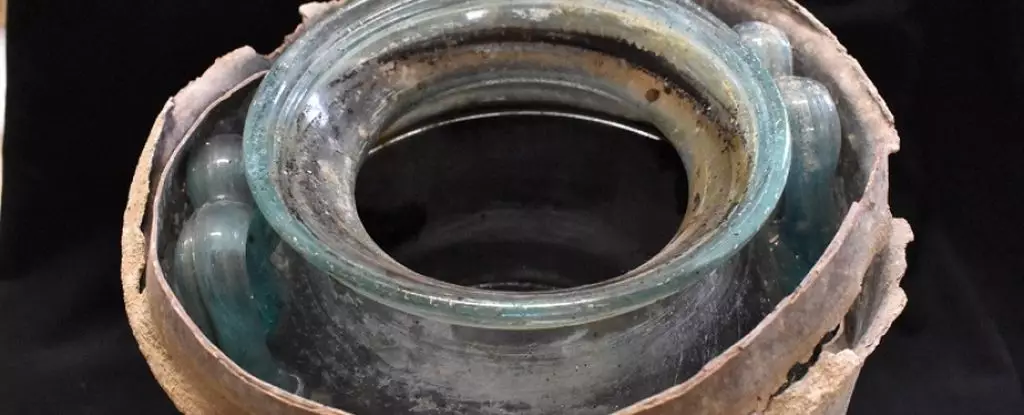In a recent excavation at the ancient Roman necropolis of Carmo in what is now Spain, archaeologists made a startling discovery. A jar of wine, still sealed after approximately 2,000 years, was found amongst the grave goods accompanying the burial of a Roman man. However, there was a macabre twist – the man’s cremated remains were placed inside the glass container before it was sealed. Despite this unsettling detail, the wine, once a sweet white, has now taken on a reddish stain and contains human dust, making it the world’s oldest known vintage.
The mausoleum in which the wine was discovered is a rare and unique find in the archaeological world. Often, ancient tombs are looted over time, leaving little behind for historians to study. However, in this case, the tomb in southern Spain remained sealed, preserving its contents against the passage of time and grave robbers. Alongside the jar of wine, a variety of luxurious grave goods were uncovered, including patchouli perfume, jewels, fabrics, and glass objects, providing a snapshot of ancient Roman burial practices and customs.
Chemists led by Daniel Cosano from the University of Cordoba in Spain conducted a series of chemical analyses on the liquid found in the glass urn. The pH of the liquid was measured, and organic matter within was identified. Using advanced techniques such as inductively coupled plasma mass spectrometry and high-performance liquid chromatography-mass spectrometry, the researchers determined the composition of the liquid. The mineral salt profile and polyphenols present were consistent with wine, with similarities to local wine regions such as Montilla-Moriles, Jerez, and Sanlucar.
While the researchers were unable to definitively pinpoint the exact origin of the wine due to the lack of contemporaneous local wines for comparison, they noted similarities to modern wines from the region. The wine closely resembled the sweet wines of Montilla-Moriles, known for producing Poe’s famous Amontillado. Despite the reddish color of the liquid, chemical analysis indicated that it was originally a white varietal, showcasing the transformation that occurred over centuries within the sealed jar.
The burial of the Roman man in the urn of wine was not an isolated occurrence in ancient Roman culture. Pouring wine onto the cremated remains of a loved one was a known funerary practice of the time, signifying respect and honor for the deceased. The man was buried alongside five other individuals, each with their own significant grave goods and artifacts. The jar containing the man’s remains also held a gold ring with a representation of Janus, the Roman god of time, symbolizing the passage from life to death.
The discovery of the world’s oldest known vintage in the form of a sealed jar of wine within an ancient Roman mausoleum sheds light on the burial practices, customs, and rituals of the past. Despite the eerie nature of finding human dust within the wine, the archaeological find provides valuable insights into the lives and beliefs of ancient civilizations. As researchers continue to unravel the mysteries of the past, each new discovery serves to enrich our understanding of history and humanity.


Leave a Reply